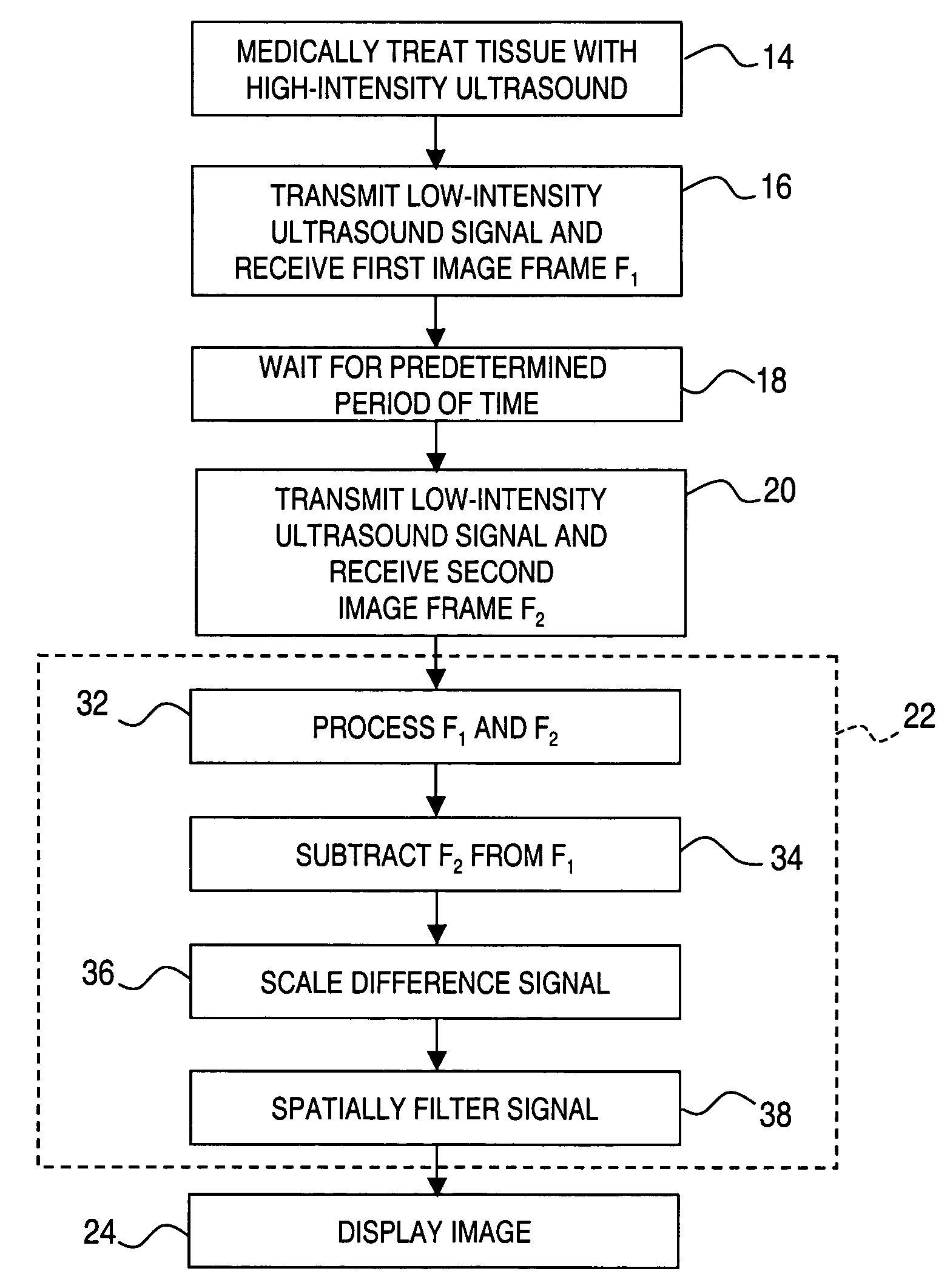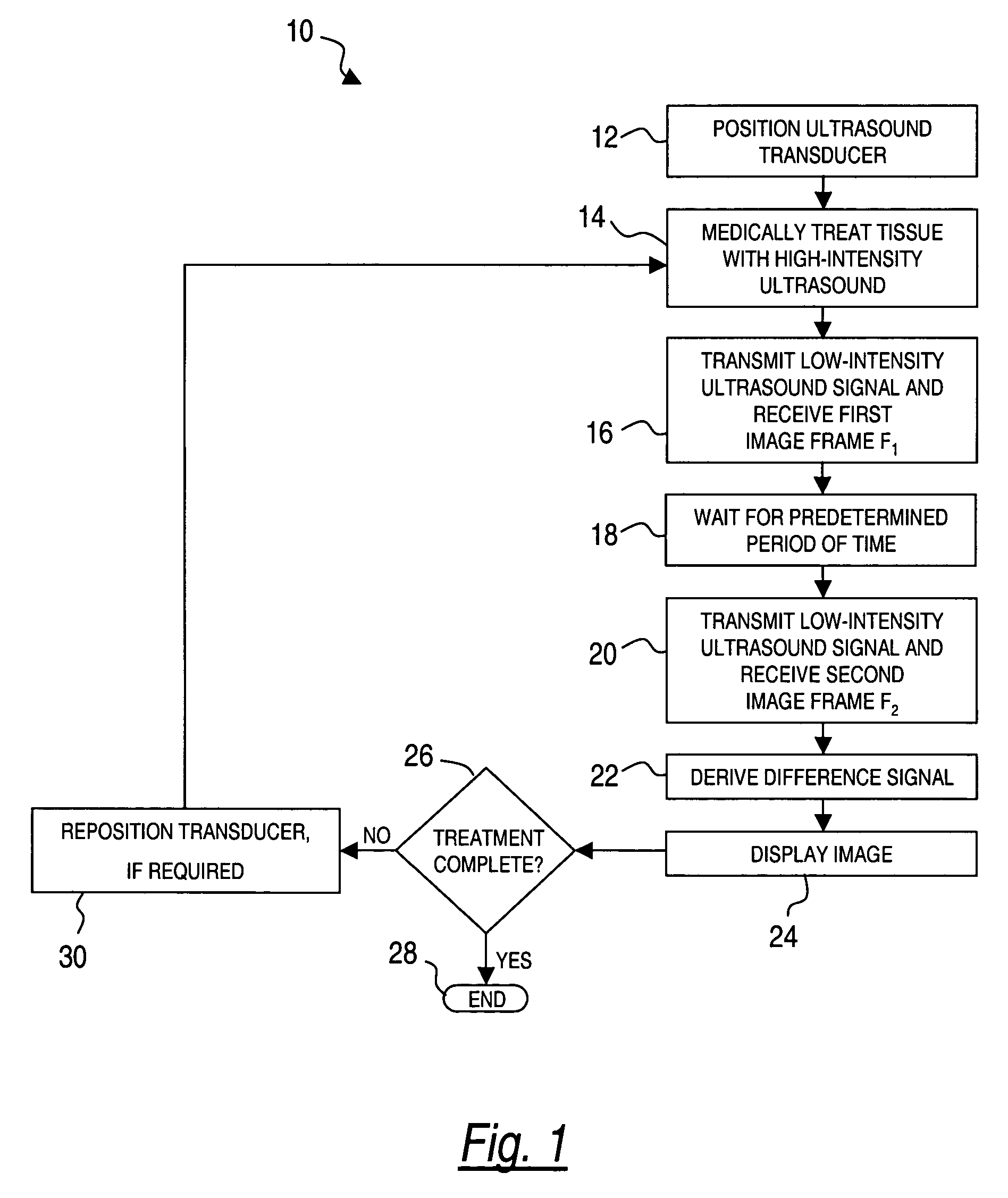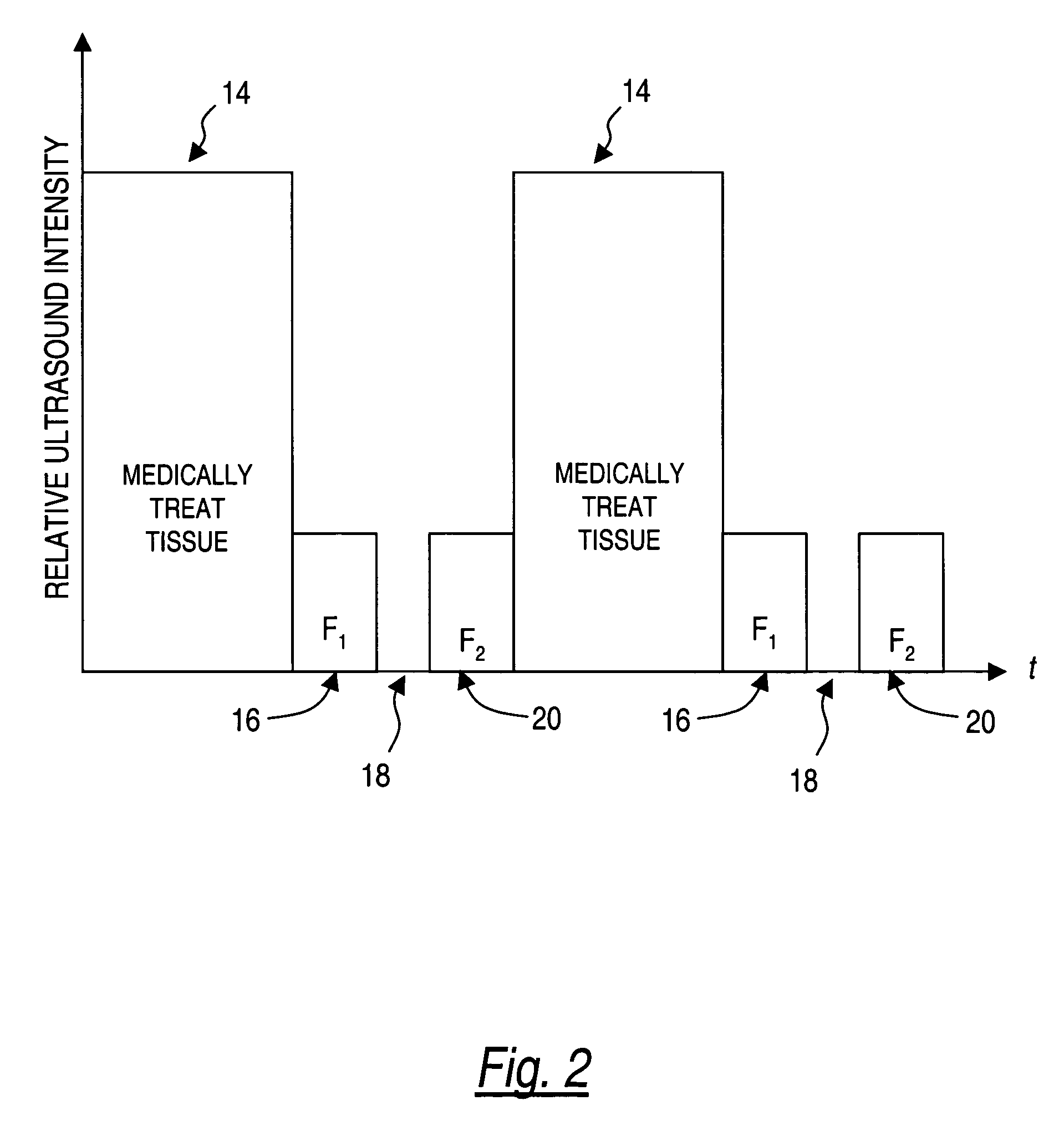Method for monitoring of medical treatment using pulse-echo ultrasound
- Summary
- Abstract
- Description
- Claims
- Application Information
AI Technical Summary
Benefits of technology
Problems solved by technology
Method used
Image
Examples
second embodiment
[0036]In the present invention, ultrasound images may be generated as depicted in FIGS. 10 and 11. At step 40 the tissue is medically treated with high-intensity ultrasound waves. At step 42 a succession of image frames, depicted as F1, F2, . . . Fn, are received. The image frames F1, F2, . . . Fn each contain a signal representing the same portion of the target tissue. At step 44 the image frames F1, F2, . . . Fn are mathematically grouped, such as by summing or averaging, to form a first image frame set labeled FS1, as shown in FIG. 11. After waiting a predetermined amount of time, as at step 46, a second set of image frames F1, F2, . . . Fn are received at step 48. At step 50 the second set of image frames F1, F2, . . . Fn are mathematically grouped, such as by summing or averaging, to form a second image frame set FS2 as shown in FIG. 11. The raw echo signals of image frame sets FS1 and FS2 may be processed at step 52, such as to derive complex analytic signals by means of a Hil...
third embodiment
[0037]In the present invention, smoothing of the image signal may alternatively be accomplished by using a plurality of image frames, as illustrated in FIGS. 12 and 13. The tissue is medically treated at step 60, then a set of image frames F1, F2, . . . Fn are received at step 62. A plurality of difference signals D1, D2, . . . Dn are computed at step 64. It should be noted that the difference signals may be computed using various arrangements of pairs of image frames. For example, difference signal D1 may be formed by subtracting F2 from F1; likewise, D2 may be formed by subtracting F3 from F2, as shown in FIG. 13. Other arrangements of image frame pairs may also be used, including (but not limited to) odd-numbered image frames (i.e., subtracting F3 from F1, etc.) and even-numbered image frames (i.e., subtracting F4 from F2, etc.). The pairings may be interlaced (i.e., subtracting F2 from F1, subtracting F3 from F2, etc.) or sequential (i.e., subtracting F2 from F1, F4 from F3, etc...
fourth embodiment
[0038]the present invention is shown in FIGS. 14 and 15 wherein a difference signal is derived using imaging frames generated both before and after medical treatment. At step 82 the ultrasound transducer is positioned proximate the targeted tissue to be medically treated. At step 84 a pre-treatment image frame F1 is generated from received ultrasound signals. Then, at step 86 the tissue is subject to a quantum of medical treatment, such as by ablating the tissue. After a quantum of medical treatment is administered, a second image frame F2 is generated at step 88. A difference signal is derived at step 90, using the data contained in image frames F1 and F2 in the same manner as previously described. An indication or image of the difference signal may be displayed at step 92. If treatment is determined to be complete at step 94, the method is ended at step 96. However, if the targeted tissue is determined to require additional treatment, the transducer may be re-positioned as necessa...
PUM
 Login to View More
Login to View More Abstract
Description
Claims
Application Information
 Login to View More
Login to View More - R&D
- Intellectual Property
- Life Sciences
- Materials
- Tech Scout
- Unparalleled Data Quality
- Higher Quality Content
- 60% Fewer Hallucinations
Browse by: Latest US Patents, China's latest patents, Technical Efficacy Thesaurus, Application Domain, Technology Topic, Popular Technical Reports.
© 2025 PatSnap. All rights reserved.Legal|Privacy policy|Modern Slavery Act Transparency Statement|Sitemap|About US| Contact US: help@patsnap.com



